One of the common misconceptions is that German Shepherds exist only in black and tan shades!
This article will introduce you to all of the beautiful German Shepherd colors that’ll make you get yourself a GSD immediately!
These dogs are interesting in terms of their origin, body types, crossbreeding, and shades. Today, you’re going to discover the mysterious world of the most common and rarest shades of this fantastic animal.
Some canines include tan, brown, black and white spotting, and others appear as a combination of two unusual shades for a German Shepherd, like the noble Isabella.
Some might be confusing because they look almost the same, but there’s always a specific detail that sets them apart.
Read on to find out which of these colors are acknowledged by the kennel clubs and dog show organizers, and which are considered severe errors!
German Shepherd Colors
There are 15 different German Shepherd Colors that might be similar to some extent, although each has at least one thing that separates them from the others.
There are ten quite common colors (although some might be considered unusual depending on the area) and five unique shades that can rarely be seen in any part of the U.S.
White

The first time I saw a white German Shepherd, I didn’t know whether I should be surprised by the fact there is a white GSD or that this color of German Shepherd isn’t the rarest!
You probably looked at it confusingly for the first time as well, and you might have even thought it was a white Golden Retriever with pointed ears, like some people thought.
There’s also a striking resemblance between the white GSD and the Berger Blanc Suisse; a dog breed from Switzerland that is also known as the White Swiss Shepherd.
The UK (KC) and the American Kennel Club (AKC) might not always agree on breed standards and guidelines. Still, both of them find it rather unacceptable, especially in dog shows and competitions, when it comes to the white color.
The KC might be a bit more flexible on this one by admitting brighter shades on the chest or legs, even though these spots and marks aren’t considered desirable.
On the other hand, the United Kennel Club (UKC) accepts the white coat color by adding it to the list of the official colors of the GSD.
During the 1950s, Germany started reducing the number of white-colored GSDs. The main reason for culling was that Germans considered these canines as albinos and were convinced that this white gene faded out the beautiful shades of the German Shepherd.
Of course, white Shepherds aren’t albinos, but there are albino GSDs that you’re going to learn about later.
Black

There’s an interesting thing between the pure black GSDs and their black and tan versions. Some GSD owners and experts claim that the coat shade isn’t the only difference between these two types of GSDs.
They say that the colors also reveal personality dissimilarities, while other people think there’s no distinction except for the tanned markings on one of them.
There are many different claims about the black GSDs and their physical appearance as well, although there isn’t any concrete evidence to support those claims.
You might hear that the dark-shaded dogs are better built, or that they have more muscles than canines in other colors, or that these doggies have fluffier and softer coats than other GSDs, but, of course, there’s no evidence to support any of these statements.
People who prefer black dogs will always have a better opinion about them and find a way to distinguish them from others.
On the other hand, there are people who believe in superstitions and think that black canines bring bad luck, especially if you notice them during the night.
Unfortunately, plenty of black doggies have been abandoned because of these beliefs.
But, according to the official kennel clubs and cynology organizations like the KC and the AKC, black German Shepherds are acknowledged as the breed standard.
Gray
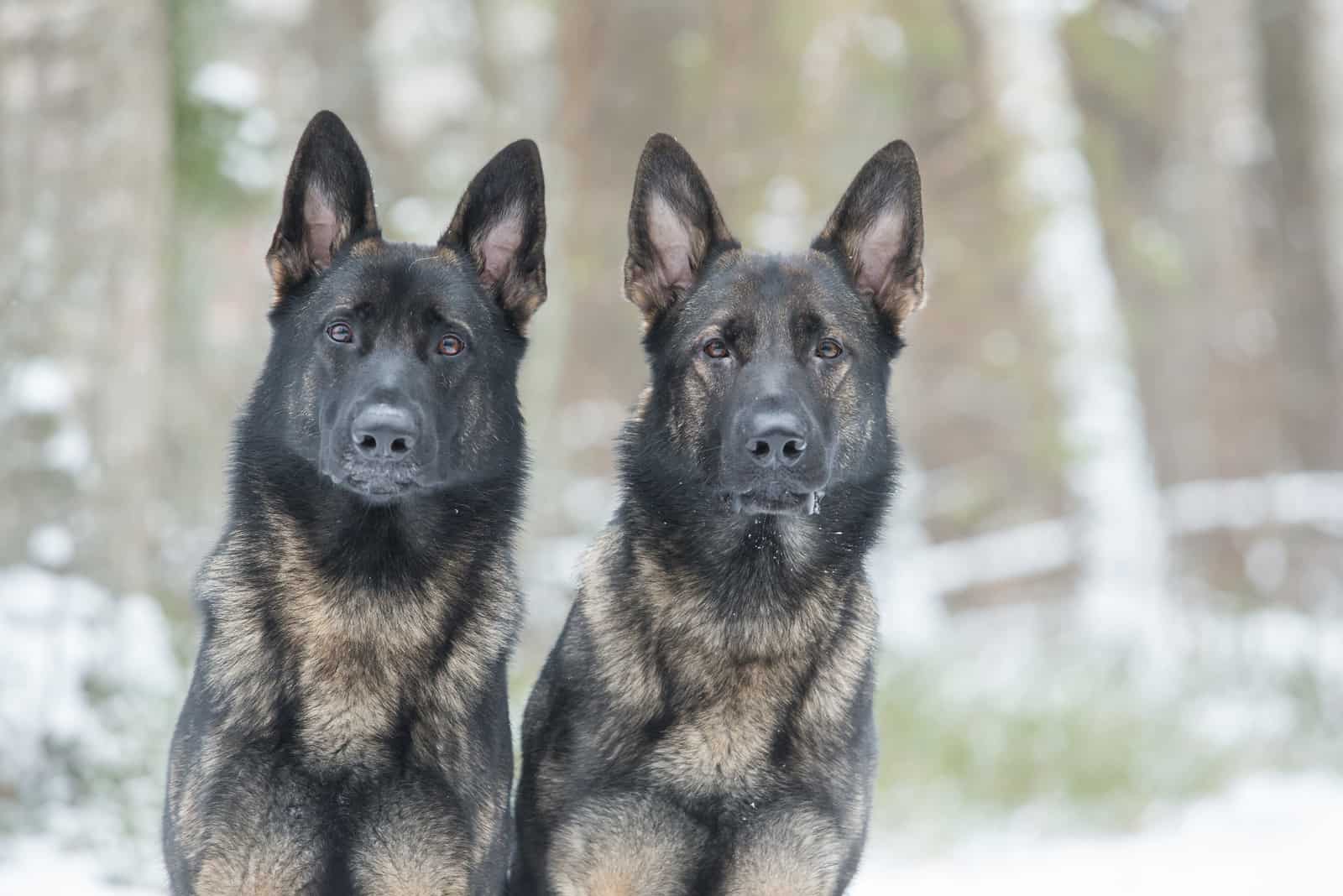
Just to be clear, the gray German Shepherd color is an entirely different shade from silver or blue, and shouldn’t be confused with any of them.
Most people would agree that this type of Shepherd resembles more of a Canis lupus (wolf) than a dog because the coat is covered with several shades of gray.
There’s a whole lot of controversy about this color that has been going on for quite a long time now.
There have been claims that gray GSDs stand for the sable or the agouti color pattern. However, the AKC has officially acknowledged gray as an acceptable solid color of the GSD that is according to the breed standard.
A significant number of gray German Shepherds don’t have any black pigment at all, like sable ones that typically have at least black hair ends on their coat.
Still, although gray and sable are two different colors according to the breed guidelines, it’s important to mention that the gray hue is present in the agouti A series.
The gray color is also very interesting as a recessive gene does not create it, but a dominant one, which is why gray German Shepherds are undemanding to breed.
Essentially, this means it only takes one parent with a gray gene to get a gray German Shepherd!
However, there’s a way to exhibit the recessive gene as well, but only if both parents carry it.
Panda and Isabella are definitely rarer colors than gray, but this color isn’t as common as black and tan either.
If you’re having trouble finding a gray-colored GSD, you might want to find a breeder that produces explicitly gray German Shepherds.
Silver
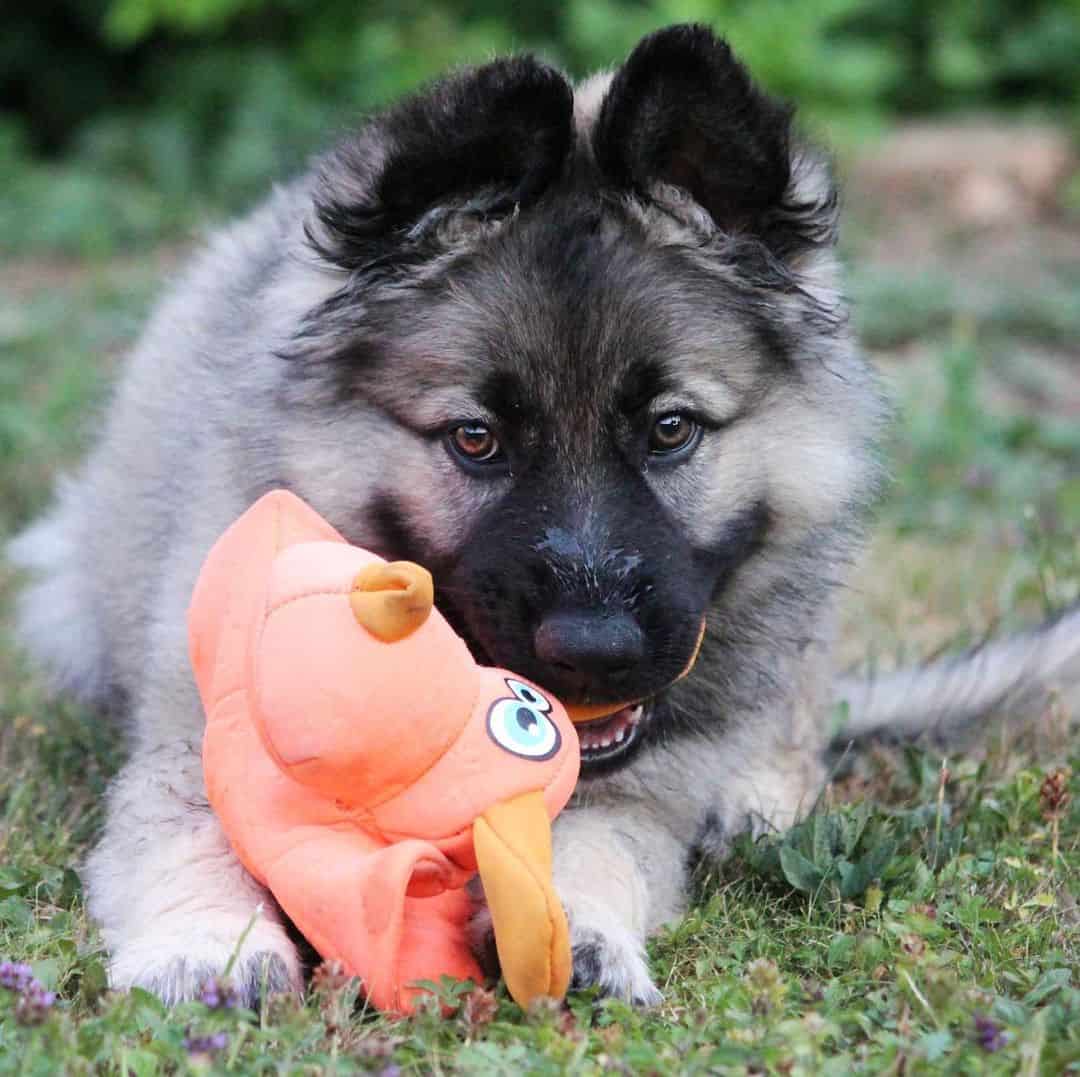
Photo from: @silversun.as
Interestingly enough, silver is recognized as a different color from gray, although they both originate from the same type of genes.
Silver color might be more uncommon among GSDs, but it’ll take you less time and effort to find a reputable breeder of silver-colored German Shepherds than a breeder of the gray ones.
Unlike gray, silver color is received by the recessive gene that includes the black pigment, as well as for the sable GSD.
There’s a silver sable GSD, but it’s not recognized as an official color because the shade seems more sable than silver.
Silver GSDs are more common in the police and the military than in dog shows, which require vibrant shades rather than dark colors.
Bicolor

Photo from: @gsd_klaus_bicolor
Bicolor, and black and tan shades are pretty similar, which is why some people might get confused, but if you look at the details, you’ll immediately know the main difference between these two.
Essentially, the bicolor canine has more black on its coat than the black and tan one. The head, tail, legs (and heels), and back should be covered in solid black.
It’s not wrong to question whether this is just a pattern or a natural shade, but according to the AKC, this color is already recognized as a shade from a recessive gene.
If you’re planning to get a German Shepherd of this color for conformation events organized by the AKC, you should know that they’re pretty rare as they’re typically used as working dogs.
If black and tan dogs have too much color for you, and you prefer to have a pet that’s not entirely black, a bicolor German Shepherd might be the perfect fit!
Black and silver

Photo from: @tatummeetslayla
Here’s another interesting mix of colors that makes the wonderful coat of the German Shepherd even more astonishing.
German Shepherds are already silver linings for their owners, and a few silver lines and markings on their coat will always be there to remind them of the positive energy of their pets.
The gene of this color might be recessive as well, but it adds even more beauty to this loyal and adorable furry friend.
The silver parts are typically positioned on the back, although they might appear in other places as well.
This type (better to say, color) of dog isn’t popular at dog competitions and shows, but it’s a well-familiar face in the working lines.
Black and tan

Photo from: @adventures.of.a.city.bear
A lot of people who aren’t quite familiar with the German Shepherd dog type and color variations think that there’s only a black and tan mix of colors until they see other German Shepherd coat shades.
The face and back in the black color are already symbols of the black and tan shade, along with the tan markings over the body (usually on the chest, muzzle, paws, etc.).
To say that this color appears as the result of a recessive or dominant gene would be an understatement mainly because this gene has dominance over the black colored canines, even though it remains recessive to the majority of the stronger sable genes.
It’s interesting to notice that the black and tan German Shepherd puppies are darker than the same-colored adult versions. This happens because they become lighter as they grow older.
The tanned part might turn into a gray stripe over the years, but this usually happens among female canines.
Black and cream
As an officially accepted shade, the black and cream German Shepherd deserves a spot on this list of GSD colors, although some people mix it with the black and tan version.
As I mentioned earlier, a black and tan GSD’s coat becomes lighter as it ages, which is why some people might mistake it for the black and cream combination.
However, it seems that the majority of reputable breeders acknowledged by the AKC don’t like the idea of having a black and cream GSD in show rings.
What they want is to breed a dog with as little cream color as possible.
The color might be important for dog shows, but it doesn’t have any impact on the canine’s personality, and the black and cream GSD is the perfect example of this.
This dog is completely loyal, hard-working, and agile, just like its differently-colored relatives.
Black and red
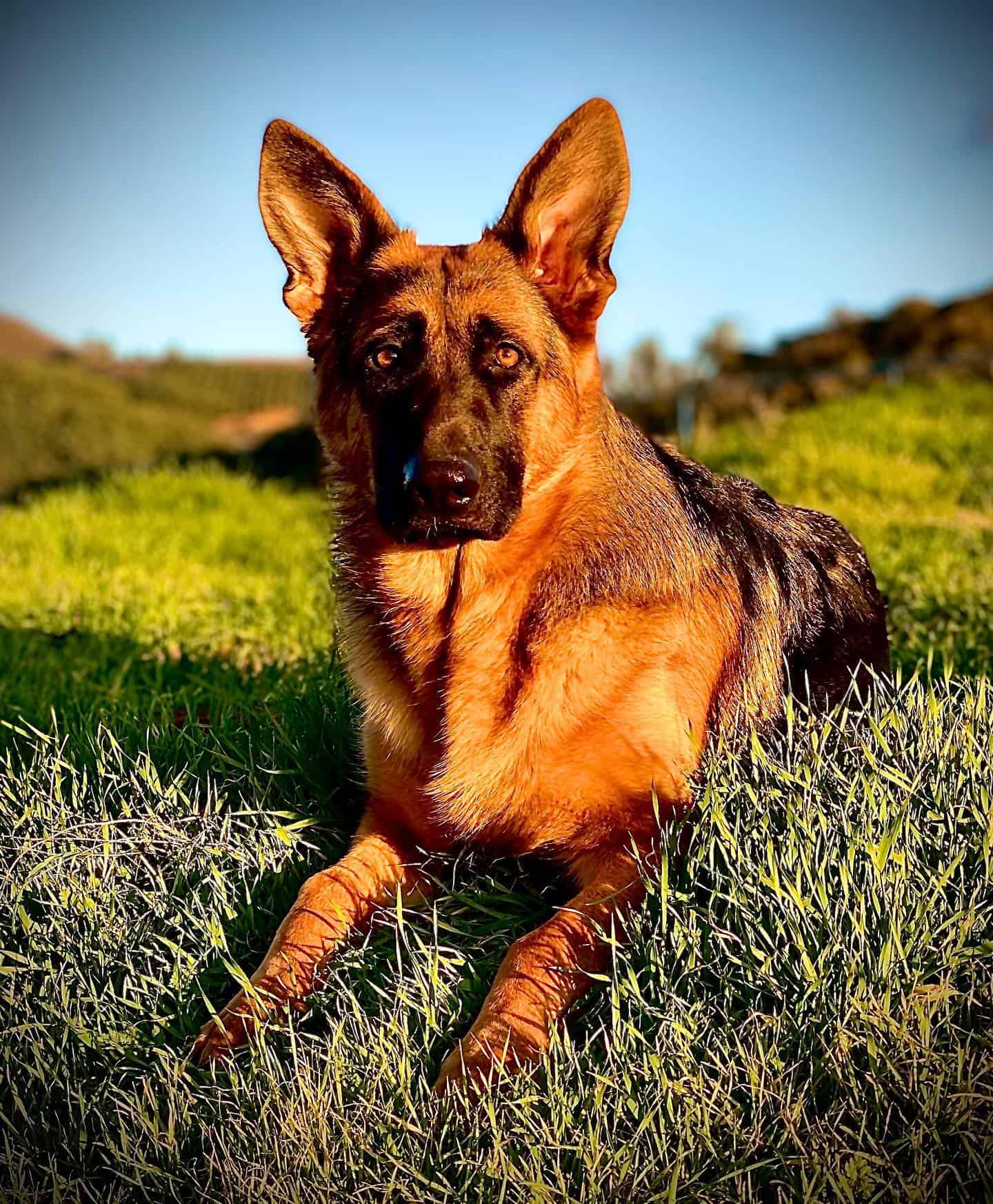
Photo from: @vomlancegermanshepherds
If you’re a fan of red color, I’m sure you’ll love a black and red German Shepherd… a not-so-rare-colored canine that’s physically very close to its black and tan cousin.
Essentially, every tanned part is replaced by the red pigment, and everything else remains the same.
This type of German Shepherd keeps the black saddle and similar color patterns, which is one of the reasons why it’s one of the most acceptable color combinations among breeders.
Both of these shades are results of the dominant gene, which makes them more common. There are plenty of breeders who are concentrated on breeding red-colored German Shepherds only.
Sable
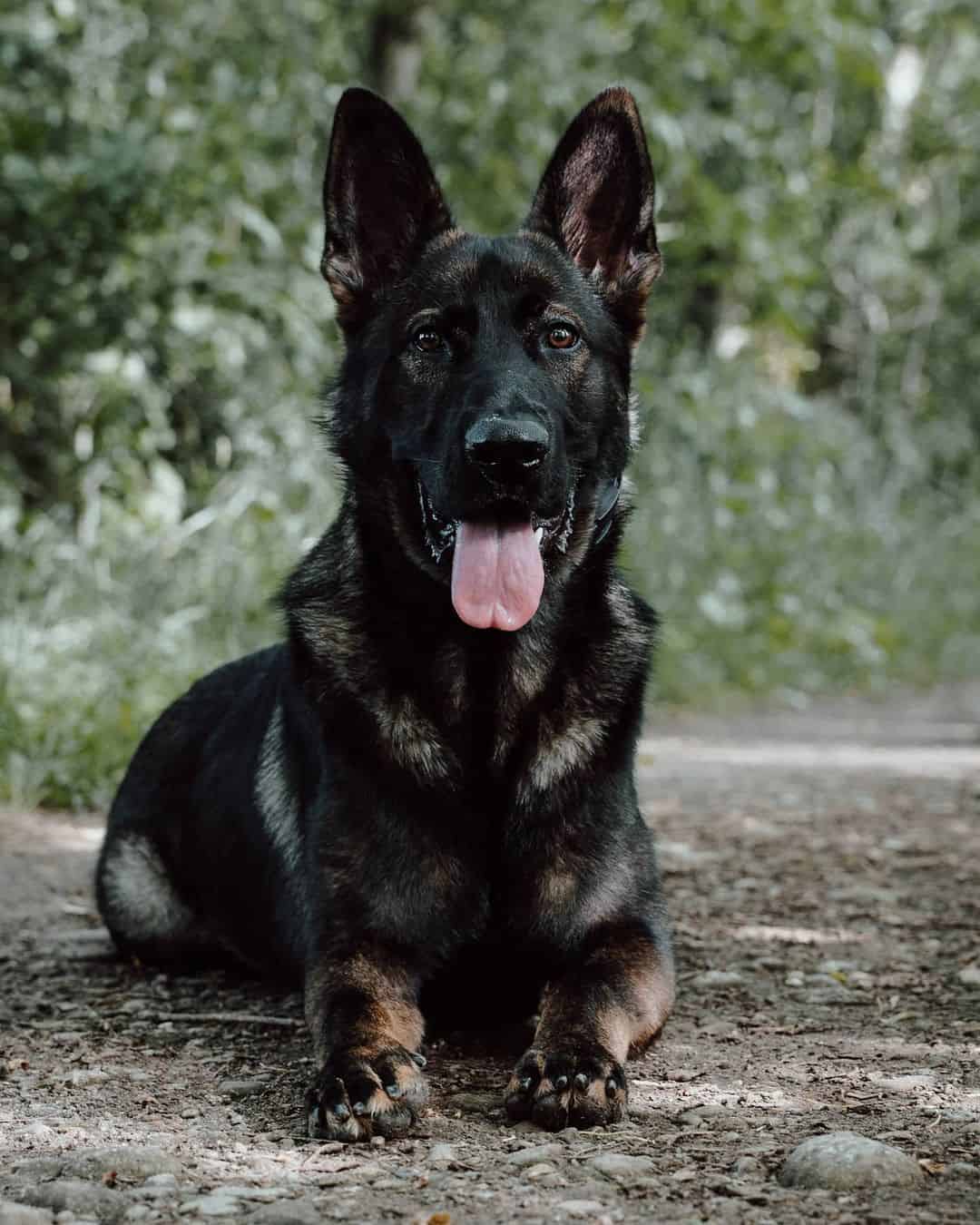
Photo from: @tedthesablegsd
This is a standard color among GSDs in several shades with black tips on their hair.
The sable color can consist of these shades:
• Red
• Silver
• Black
• Gray
• Tan
The sable type of color is also called “agouti,” and it represents a wolf-like shade of coat.
The sable shade was long considered the only color that could be officially acknowledged as the color of the German Shepherd.
This color isn’t visible right after the birth of a puppy. Most young German Shepherds remain black or black and brown for the first few years of their life (some puppies might show the difference after several months, but some might take up to three years to show (keep in mind that your dog might be of
black sable color as well).
Sable-colored German Shepherds are easy to breed because they carry the dominant gene. This means that the puppies will almost always come out sable no matter which color they are mixed with.
There are many different sable German Shepherd breeders in the U.S., so you have to make sure to choose the best one!
It’s important to mention that although black and tan canines are very common, the sable German Shepherd was the original GSD of the working line.
Unique German Shepherd Colors
Most of the unique German Shepherd colors are challenging to find because they’re non-standard. Therefore, most breeders try to reduce the number of such canines and produce only AKC- or KC-acknowledged shades.
However, just because a color is regarded as non-standard according to certain organizations and kennel clubs doesn’t mean that the canine isn’t purebred.
Each of the color types mentioned below is a purebred German Shepherd, but they’re just marked with a unique shade that makes them stand out from others.
Blue

Photo from: @fenrisfangs
This color is unique. It’s almost on the verge of impossible, at least until you finally get a chance to see a Blue German Shepherd in front of you.
Many people confuse the silver German Shepherd with the blue one mostly because of the silver-like reflection in the sunlight.
There’s a great demand for blue GSDs, but on the other hand, there’s just as much controversy surrounding the whole color thing.
Read Also: 7 Blue German Shepherd Breeders To Test Your Luck
The dilution gene is sometimes related to genetic health conditions, which is why blue and white dogs were considered undesirable in the past.
Fortunately, the situation is changing, and most breeders don’t find canines in these colors problematic anymore.
There are more and more blue and white German Shepherds that are perfectly healthy and full of life!
When it comes to health issues, this type of pup doesn’t get any less or more sick because of its coat, which is why more breeders are focusing on them nowadays.
Liver

Photo from: @livergermanshepherd
A liver Shepherd might have a different color, but it’s the same dog regarding temperament and personality.
This color looks more like a washed-out red color that turns into amber and brown in certain places. This color appears in body parts that’d usually be black (back, legs, etc.).
Therefore, instead of the black mask, the liver German Shepherd will have a red mask that turns brown around the nose, paws, muzzle, etc.
The AKC doesn’t accept this color as an official Shepherd shade unless it’s a strong liver color (almost the same as red). As it’s already known, most kennel clubs and other organizations prefer rich colors rather than faded shades, which they consider a critical error.
All these rules and regulations might sound confusing, but there’s specific logic behind them. The AKC also fails to recognize any liver combination colors, which means that liver and black, or liver and tan colors, are out of every dog show or competition.
The Liver German Shepherd bloodline isn’t easy to find, but if you invest enough effort, time, and money, you’ll have this rare canine in your home in no time.
Panda

Photo from: @fez_the_panda
A panda GSD is a remarkable type of dog that is often mixed with the Border Collie breed.
In the past, panda German Shepherds were considered a mixed breed until DNA testing, which finally proved that this type of Shepherd is also purebred, just like dogs in other colors.
This color is considered a genetic mutation rather than an official shade, which is why most organizations and breeders still refuse to accept it.
According to experts and breeders, more than a third of the canine’s body is covered with white color because of the piebald gene.
However, white Shepherds aren’t a part of the panda’s lineage. There are two distinct genes that cause a partial- or a fully-covered white coat.
The AKC, like most, might not acknowledge the panda Shepherd, but that doesn’t make them less popular!
The price also grows with popularity, so it’s no surprise that these pups are more expensive now than they were before.
Unfortunately, some breeders use the situation to produce as many of these dogs as possible without any concerns for the puppy’s health.
That’s precisely the reason why every future dog owner needs to be careful and only choose trustworthy breeders.
Albino
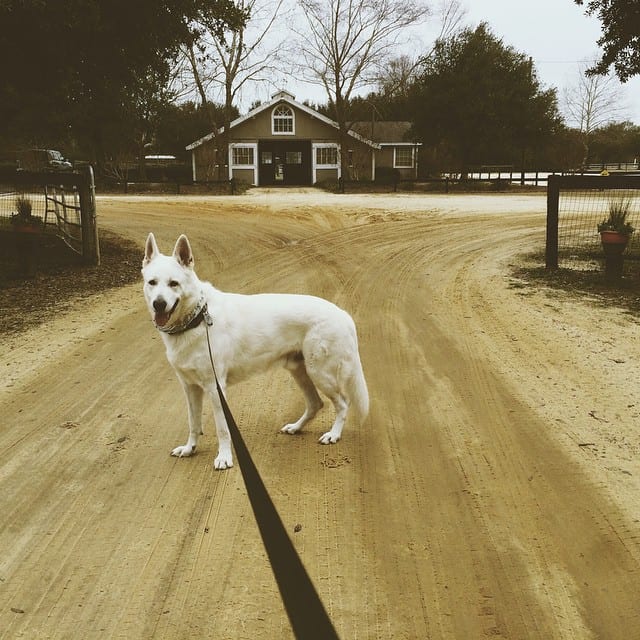
Photo from: @glenviewfarmkennel
Albinos are an unusual sight not only among German Shepherds, but in other breeds and species as well.
Depigmented hair, eyes, or the whole body (skin) are all signs of albinism. However, not all white canines are albinos; in fact, the majority of albino German Shepherds turn out to be white GSDs.
The best way to avoid such confusion is to inspect your dog’s eyes. If they’re pink or red, your pet is most likely an albino (the same goes for the nose).
This type of canine is susceptible and requires more attention than a regular pet.
One of the most common conditions that affect the majority of albino Shepherds is photosensitivity. They have to be protected from the sunlight and the UV rays in order to avoid any side effect such as fatigue, skin rashes, fever, etc.
Albino Shepherds are fantastic pets, just like any other German Shepherd. If you’re looking for a unique, yet obedient and amiable family pet, an albino German Shepherd will surely fit your needs.
Isabella
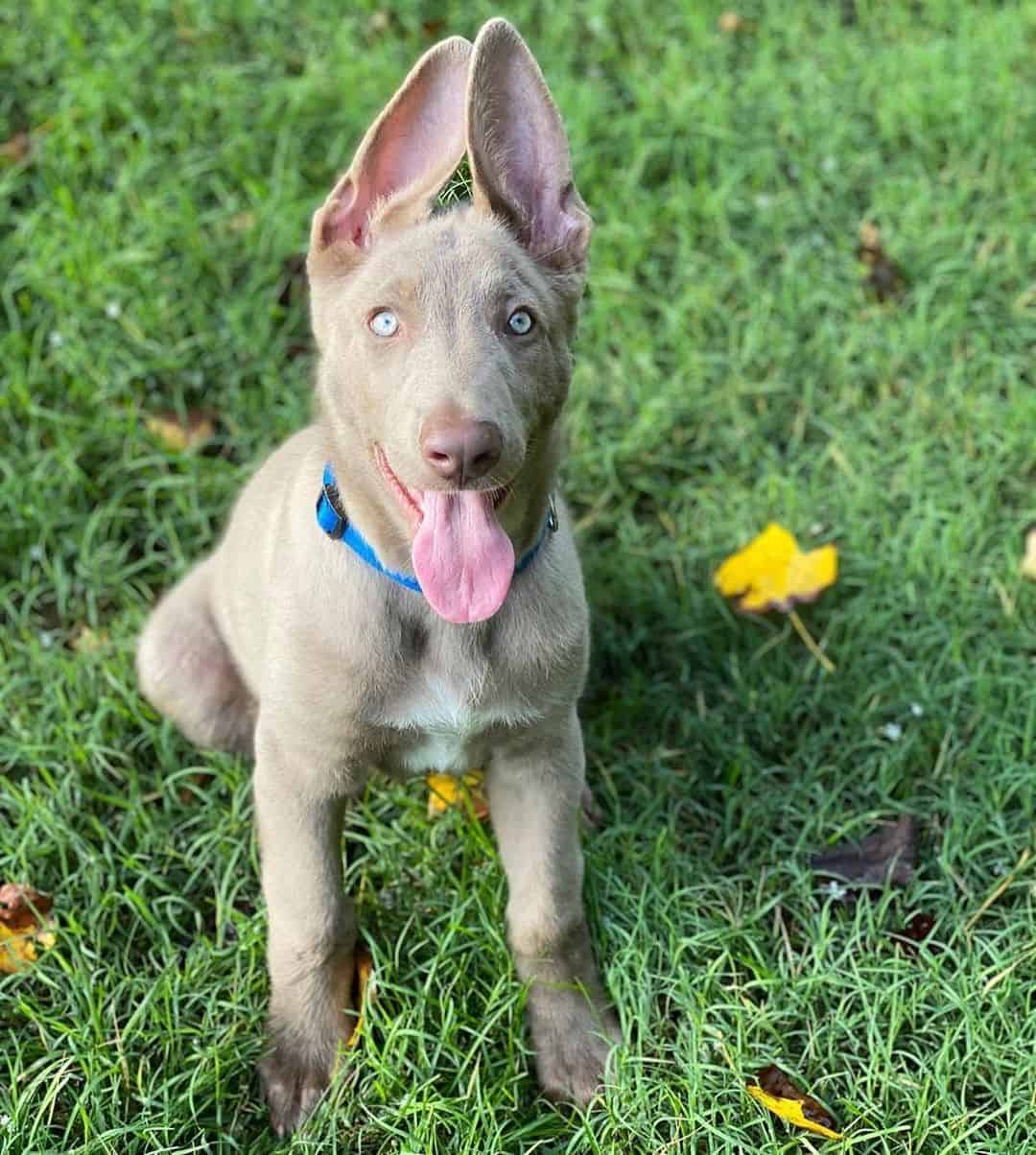
Photo from: @alishaorwat
This type of German Shepherd is unique for several reasons. This is one of the rare color-type names for German Shepherds that doesn’t instantly reveal what color it is.
This name reminds me of aristocracy, love, and beauty that’s beyond anything in this world. I have to admit that the Isabella Shepherd looks just like a royal; therefore, I completely understand why it’s called this way!
This color is definitely a rare sight, but the explanation of its origin might be more straightforward than you’d think.
This shade is considered as the consequence of the combination of a liver and a blue GSD.
The rarity of this color lies in the fact that the AKC and most reputable organizations don’t recognize Isabella as an official color of the GSD, but rather as a serious fault, which isn’t surprising as both blue and liver color are considered faults as well.
Most breeders will confirm that this type of GSD color is unwanted because it’s not produced for the show line. However, there are still those who breed Isabella Shepherds because they’re rare and expensive.
If you wish to own an Isabella, you’ll have to pay a fortune to get one.
The Finest German Shepherd Colors
The shade of the German Shepherd isn’t important in any other aspect than canine competitions and conformation events.
If this is the primary purpose of owning a dog, you should definitely go with the classic black and tan that always takes the most praise.
However, if you’re planning to get a GSD as a working or a family dog, it doesn’t matter which color it is; that’s all up to you and your personal preferences.
In the past, white Shepherds weren’t considered strong enough for work. However, this type of GSD has proven multiple times that strength has nothing to do with the color of the coat.
Coat Types And Grooming

The length and type of the coat vary almost as much as the colors of German Shepherds.
The most common coat type would be medium length with a double layer. The outer layer is typically curly with a rough structure, while the inner layer stays soft and fluffy.
However, there are long-haired types of GSDs, although they’re much rarer than the medium ones.
German Shepherds are known as great shedders; therefore, be prepared to find coat hair everywhere in the house.
The only way German Shepherd colors might be of use against shedding is that you can match the color of your pet with your furniture so it’s less visible.
Therefore, I’d strongly suggest you get a really good brush for your GSD and get down to business every two or three days a week (at least).
However, that doesn’t mean you need to bathe your furry friend each time you brush its hair.
Shepherds usually stay clean for a long time, so there’s no need to bathe your doggie until it’s necessary. Also, you don’t have to wait until it starts smelling funny or has visible dirt on its hair either.
German Shepherd Health Problems
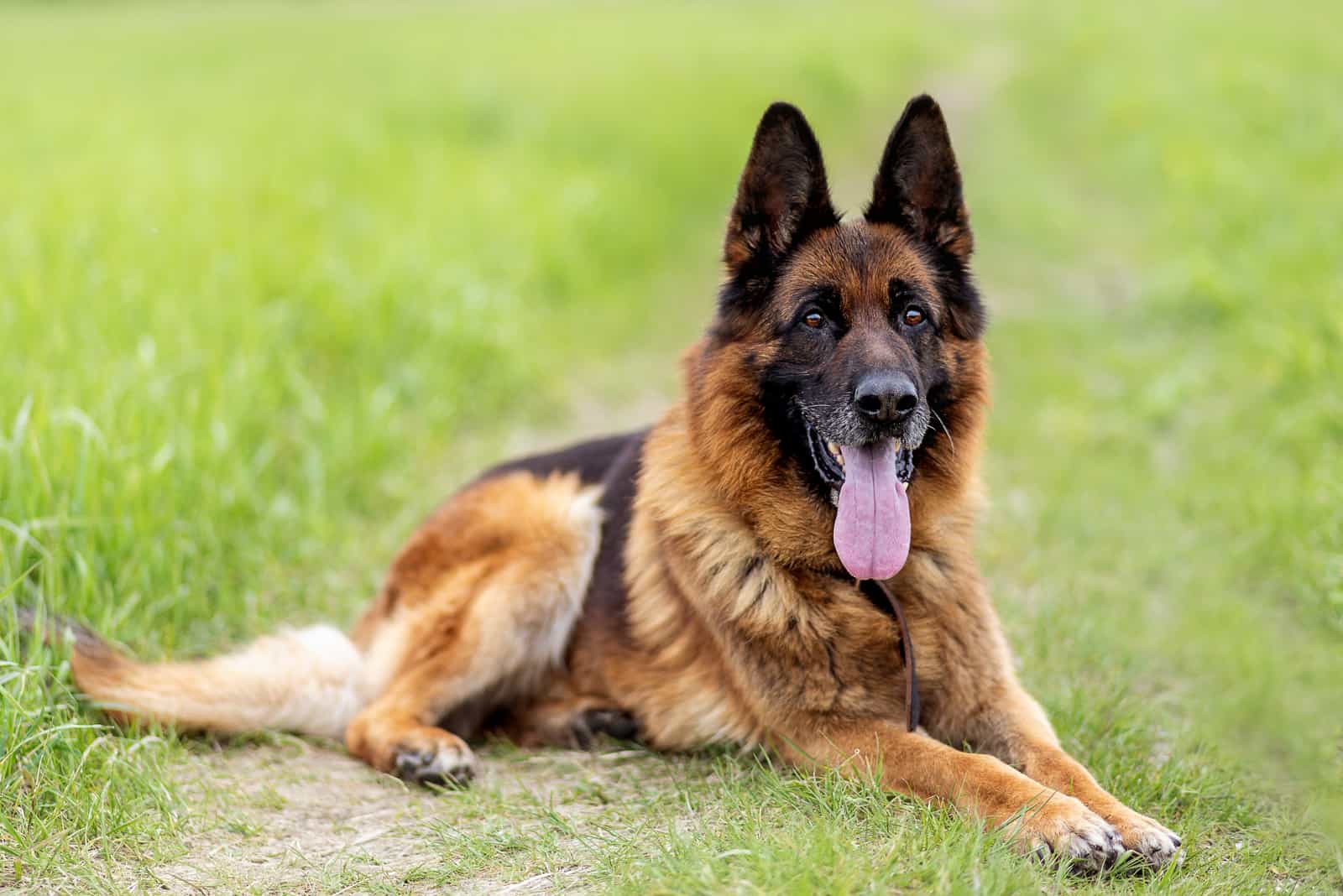
Just like any other dog breed, GSDs also have a higher risk of specific conditions and illnesses such as:
• Hip Dysplasia
• Bloating
• Degenerative Disc Disease
• Epilepsy
• Diabetes
• Elbow Dysplasia
• Hemophilia
• Cataracts
Most of these conditions appear at an older age if they appear at all. There’s no scientific relation between certain colors and health issues, although some have claimed that dogs with blue eyes and white coats have higher risks of suffering from eye illnesses or deafness.
As you can notice, most of these health issues are connected to other breeds. Therefore, there’s no need to see them as a German Shepherd’s weaknesses, but rather as the conditions that require periodic checkups just to make sure that everything’s fine.
Final Thoughts

There’s a variety of German Shepherd colors that enhances their beauty and enables you to get a pet in your favorite color.
However, keep in mind that looks aren’t the only thing that matter when it comes to picking out your new furry friend.
Some colors might look attractive because they’re rare, but keep in mind that some dogs are bred only because of the color, without any care about the puppy’s health and overall condition.
That’s why it’s crucial to find a reputable breeder with great reviews and recognition from certified organizations, such as kennel clubs.
You won’t be wrong by choosing a German Shepherd breed as a family dog for sure. Good luck!
Read Next:
• Giant German Shepherd Crash Course
• 7 Types Of German Shepherds – All Variations In One Place
• How To Identify A Full-Blooded German Shepherd















